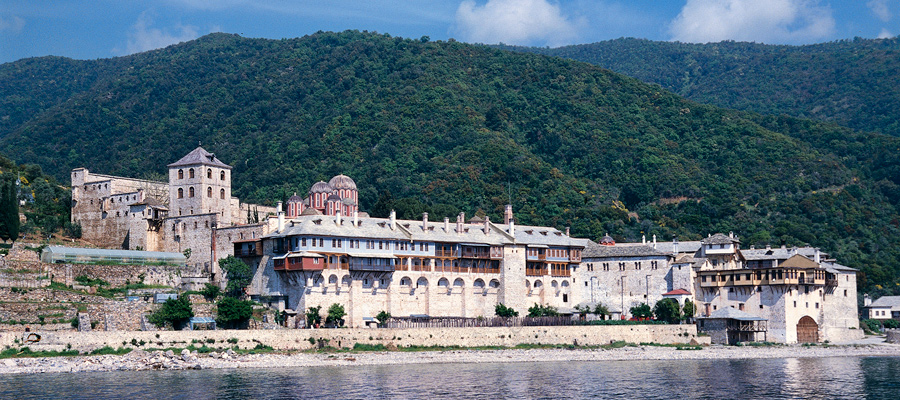Xenophontos monastery
It is one of the oldest monastic establishments in Mount Athos. It stands in the middle of the western side of Athos, between the monasteries of Panteleimonos and Dochiariou. There were some conflicts at times, between the monasteries of Xenophontos and Dochiariou, regarding matters of property and their position in the Athonite rank.
Although the oral tradition indicates its foundation in the 6th century, written testimonies place it just before the end of the 10th century. St. Xenophontas was its founder, who also served as abbot. Initially, it honored the memory of St. George and was small in size. In 1083, Byzantine admiral Stefanos was added as a second founder by becoming a monk under the name of Simeon and extending the monastic complex. Its coastline position, though, caused in 1225, the disastrous raid by Latin pirates. It managed to recover, though, under Abbot Varlaam (1312-1325) in the early 14th century.
Since 1425, it entered a dark historic period, in which it was controlled by Slav monks. During Ottoman rule it was supported by donations of worshipers from Wallachia, from the proceeds of the “Romva” Skete, as well as from the revenues of two villages given by Roman abbots. It also had properties in Thessaloniki, Halkidiki and Lemnos. The two “Catholicon” dedicated to St. George are a special feature of the monastery. The oldest one is dated in the 11th century and its narthex is adjacent to the eastern side of the church. It is one of the smallest in Athos, with murals showing the Cretan school of 1544 in the main temple, attributed to the hagiographer Anthony.
There are 11 chapels, 3 of which are illustrated. The sacristy has, among others, a 13th century embossed icon of Tranfiguration made in steatite stone and mosaic pictures of St. George and St. Dimitrios dated in the second half of the 12th century. The Skete of Evaggalismos founded in 1766 is a part of the monastery where ascetic monks live and engage in hagiography, bookbinding and woodcarving.
Text: Dr. Antonios G. Dikaios/ Theologian – Environmentalist.






